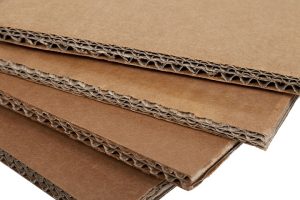In a 2021 update, The Joint Commission (TJC) Resources published a Q&A on their position on managing cardboard or corrugated boxes and shipping containers. You may ask: Why is this important to infection control within my hospital?
TJC’s answer is that: “Shipping containers, especially those made of a corrugated material, serve as generators of and reservoirs for dust. Corrugated cardboard boxes are susceptible to moisture, water, vermin and bacteria during warehouse or storeroom storage, as well as transportation environments. Boxes and containers may have been exposed to unknown and potentially high microbial contamination.”

We all know that microbial contamination refers to the non-intended or accidental introduction of infectious material like bacteria, yeast, mold, fungi, virus, prions, protozoa or their toxins and by-products. These are sources and potential transmission of infections and communicable diseases in health care facilities. Cardboard shipping boxes are stored in warehouses and shipped in dirty transport vehicles (i.e., jet airliners, trailers, box trucks, etc.) from all over the world.
TJC recommends “when organizations are making a determination as to whether these boxes and containers are appropriate to be located in a certain area, they should consider the potential adverse impact of dust, moisture, bacteria or other contaminants on that area.”
TJC also states that health care organizations should consider “where to load or unload supplies, criteria for content break-down areas, and what level of packaging to keep within the area in question.” TJC also points to other “evidence-based guidelines and national standards such as those promulgated by the US Centers for Disease Control and Prevention.”
When health care facilities receive these cardboard boxes and move them into areas within the building, the next step is generally to break them down to remove the contents for storage inside the building. This break-down process can create copious amounts of airborne dust which act as carriers of these microbes throughout the area. Most of this airborne contamination cannot be seen with the naked eye, since we cannot see airborne particles smaller than 40 microns (0.00157 inches) without magnification.
Remember, Aspergillus spores are only 2.0 to 3.5 microns in mean aerodynamic diameter, and bacteria are much smaller!

These potentially pathogenic particles of bacteria and fungi ten stay in the air to be carried through the indoor spaces. These particles can cause infection control issues for critical hospital areas like Sterile Processing, Sterile Compound Pharmacies, Burn units, NICU/PICU, and ICUs.
This information is not new, the American National Standards Institute/Advancement of Medical Instrumentation ANSI/AAMI ST 79 5.2.1 standard first published in 2006 states that: “Clean or sterile items to be transported to central processing and storage areas within the facility should be removed from their external shipping containers before they enter the storage areas of the department.” This information has also been republished by the American Professionals for Infection Control and Epidemiology (APIC) in their online ASC/Clinic IC Assessment Form.
For more information, contact Higgins and Associates’ Director of EHS, Art Goguen, at (303) 708-9846, Ext 105. You can also visit higgins-and-associates.com to learn more about our healthcare EHS services.
References:
TJC, Boxes and Shipping Containers – What is The Joint Commission’s position on managing cardboard or corrugated boxes and shipping containers? https://www.jointcommission.org/standards/standard-faqs/ambulatory/infection-prevention-and-control-ic/000002145/
ANSI/AAMI ST 79 5.2.1, Comprehensive Guide To Steam Sterilization And Sterility Assurance In Health Care Facilities, https://webstore.ansi.org/standards/aami/ansiaamist792017
APIC, ASC/Clinic IC Assessment Form, https://apic.org/Resource_/TinyMceFileManager/Education/ASC_Intensive/Resources_Page/1_ASC_Int_IC_Assessment_Tool_rev_6.15.16_GF-MP_FINAL_UPDATED.xlsx



